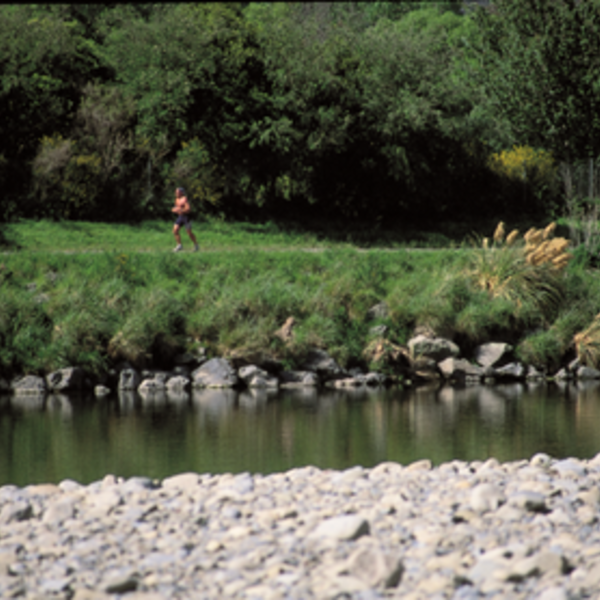Active Projects
-
Site 5: Fullers Bend, Waiōhine Awa, Greytown→
This project is one of 16 being carried out across South Wairarapa and Kapiti. It involves upgrading the current flood erosion protection.
-
Site 6: Awaroa Sill, Ruamāhanga Awa→
This project is one of 16 being carried out across South Wairarapa and Kapiti. Erosion at a bend in the Ruamāhanga River requires remedial work.
-
Site 7: Masterton Raw Water Supply, Waingawa Awa→
This project is one of 16 being carried out across South Wairarapa and Kapiti. It will deliver flood resilience to Masterton District Council’s main water supply pipeline.
-
Site 9: Ōtaki Cliffs, Ōtaki Awa→
This project is one of 16 being carried out across South Wairarapa and Kāpiti. It will create more room for the Otaki River and enhance cliff resilience.
-
Site 10: Tawaha sill, Ruamāhanga Awa→
This project is one of 16 being carried out across South Wairarapa and Kapiti. The work will see the upgrade of the Tawaha floodway sill.
-
Site 12: (Various) Fish passage upgrades→
This project is one of 16 being carried out across South Wairarapa and Kapiti. This work involves upgrades to existing river infrastructure at approximately 15 floodgates and five pump stations.
-
Site 13: South Masterton stopbank, Waingawa Awa→
This project is one of 16 being carried out across South Wairarapa and Kapiti. The work involves building a new 230m stopbank.
-
Site 14: Homebush wastewater treatment plant resilience works→
This project is one of 16 being carried out across South Wairarapa and Kapiti. In a significant flood the current stopbank may overtop. The aim is to protect the wastewater treatment plant from flooding, improving community resilience and preventing environmental pollution.
-
Site 15: Upper Ruamāhanga buffer establishment→
This project is one of 16 being carried out across South Wairarapa and Kapiti. It involves widening the Ruamāhanga River channel and moving the stopbanks.
-
Site 16: Whakawhiriwhiri Stream, project re-scope→
This project is one of 16 being carried out across South Wairarapa and Kapiti. The aim of this project is to accommodate flooding and environmental considerations while managing flood risk to the community.
Completed Projects
-
Site 8: Waingawa Awa Hood Aerodrome→
This project is one of 16 being carried out across South Wairarapa and Kapiti. This project's aim is to protect Masterton's airport runway.
-
Site 1: River Road, Masterton Stage 2→
This project (now complete) is one of 16 being carried out across South Wairarapa and Kapiti. It will help guard against riverbank erosion, providing enhanced flood resilience to nearby properties.
-
Site 2: River Road, Masterton Stage 3→
This project is one of 16 being carried out across South Wairarapa and Kāpiti, and was completed in March 2025.
-
Site 3: Waipōua SH2 bridge left bank protection, Masterton→
This project is one of 16 being carried out across South Wairarapa and Kapiti. It is needed to limit riverbank erosion on the Waipōua awa.
-
Site 4: Waipōua industrial site, Akura Road, Masterton→
This project is one of 16 being carried out across South Wairarapa and Kapiti. There has been significant erosion of the Waipōua riverbank at Akura Road. This is undermining an adjacent industrial property that protects Masterton’s water supply.
-
Site 11: Pukio East stopbank, Ruamāhanga Awa→
This project is one of 16 being carried out across South Wairarapa and Kapiti. This work finalises the stopbank project in this area.
-
Te Awa Kairangi / Hutt River improvements→
Over 150,000 people live in communities along the 56km-long Te Awa Kairangi / Hutt River. Fourteen climate resilience projects were delivered along this river between October 2020 and June 2022. These projects aim to help protect lives and livelihoods by making river communities more resilient to the effects of climate change.
-
Ruamāhanga River erosion protection, Wairarapa→
Erosion protection works took place along an 850 metre stretch of the Ruamāhanga River, starting from where the Waipoua River meets the Ruamāhanga and stretching downriver.
-
Broader outcomes initiatives→
Greater Wellington’s Climate Resilience Programme delivers clear environmental benefits. Over 65,000 plants were planted along riverbanks and in parks by the end of the programme.
